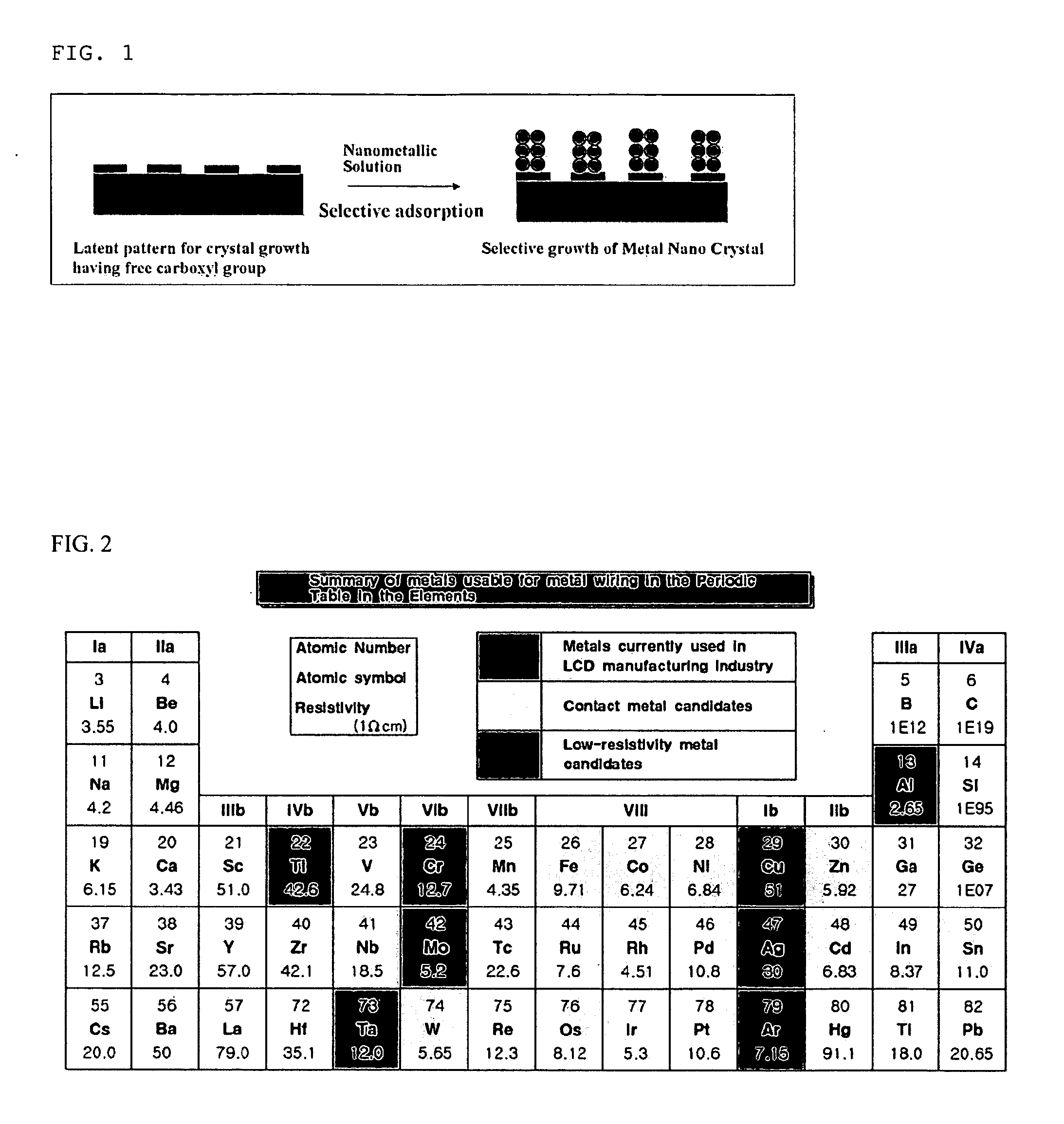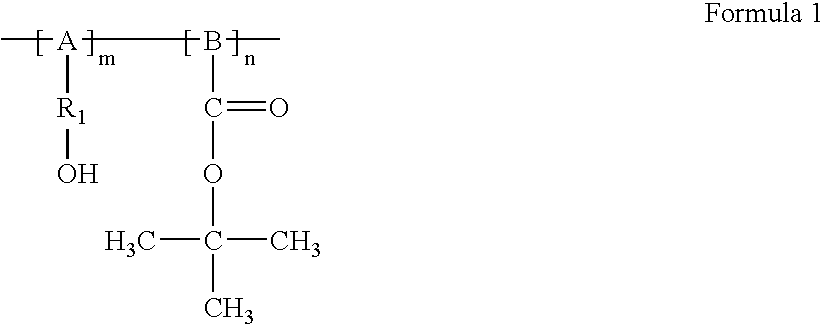Method for forming metal pattern by using metal nanocrystals
- Summary
- Abstract
- Description
- Claims
- Application Information
AI Technical Summary
Benefits of technology
Problems solved by technology
Method used
Image
Examples
example 1
[0045] 1-1) Formation of Latent Pattern for Crystal Growth Having Carboxyl Group
[0046] 1 g of poly(t-butylmethacrylate-co-2-hydroxyethylmethacrylate) copolymer (Formula 3) was dissolved in 10 g of propylene glycol monomethyl ethyl acetate (PGMEA) as a solvent, and then the solution was spin-coated on a transparent polyester film. The coated film was dried at 100° C. for 10 minutes to prepare a photosensitive film having a thickness of about 100 nm. UV light was irradiated from a UV exposure system (Oriel, U.S.A) to the photosensitive film through a photomask on which a minute pattern was formed in the presence of the onium salt of Formula 2 as a photoacid generator. The exposed film was subjected to post exposure baking by heating to 120° C. for 10 minutes, and developed with pure water to form a latent pattern for crystal growth having an exposed free carboxyl group, on which a metal pattern could be formed.
[0047] 1-2) Formation of Metal Pattern Consisting of Nanocrystals;
[0048...
example 2
[0049] The substrate prepared in Example 1-1) was dipped in a composition for metal crystal growth consisting of 16.9 g of AgNO3, 12.5 g of NH4OH, 1.2 g of C4H4O6KNa and 20 g of H2O for 10 minutes to grow crystals of a patterned metal wiring. The above procedure was repeated once to form a wiring pattern of silver. The conductivity of the patterned substrate is shown in Table 2. The conductivity was measured by the same method as in Example 1.
example 3
[0050] The substrate prepared in Example 1-1) was dipped in a composition for metal crystal growth consisting of 16.9 g of AgNO3, 12.5 g of NH4OH, 1.2 g of C4H4O6KNa and 40 g of H2O for one minute to grow crystals of a patterned metal wiring. The above procedure was repeated three times to form a wiring pattern of silver. The conductivity of the patterned substrate is shown in Table 2. The conductivity was measured by the same method as in Example 1.
PUM
| Property | Measurement | Unit |
|---|---|---|
| Temperature | aaaaa | aaaaa |
| Thickness | aaaaa | aaaaa |
| Nanoscale particle size | aaaaa | aaaaa |
Abstract
Description
Claims
Application Information
 Login to View More
Login to View More - R&D
- Intellectual Property
- Life Sciences
- Materials
- Tech Scout
- Unparalleled Data Quality
- Higher Quality Content
- 60% Fewer Hallucinations
Browse by: Latest US Patents, China's latest patents, Technical Efficacy Thesaurus, Application Domain, Technology Topic, Popular Technical Reports.
© 2025 PatSnap. All rights reserved.Legal|Privacy policy|Modern Slavery Act Transparency Statement|Sitemap|About US| Contact US: help@patsnap.com



